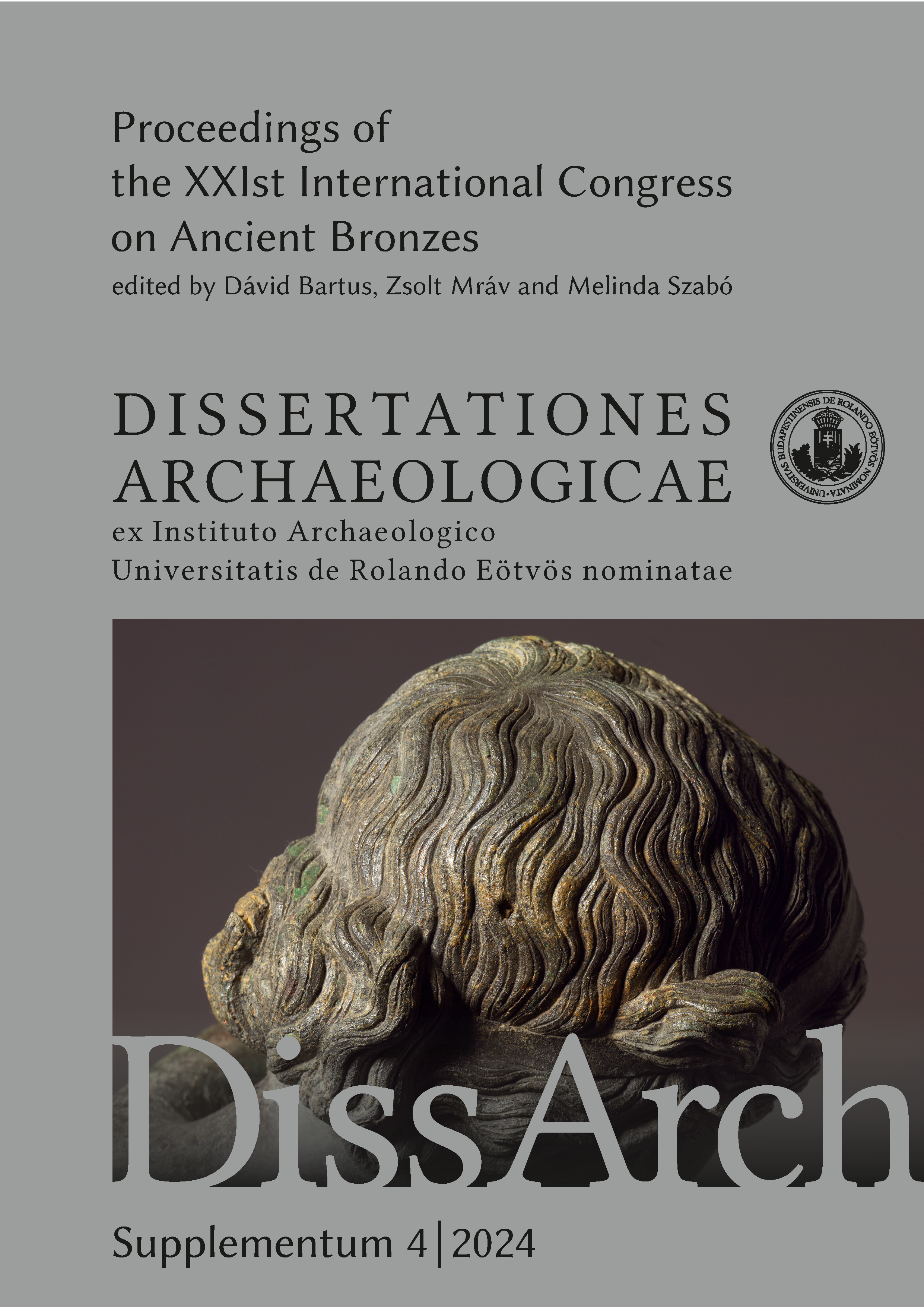Published 2024-09-30
Keywords
- large bronzes,
- technology,
- polychromy,
- teeth,
- lips
How to Cite
Abstract
Until the Hadrianic period, large bronzes had a naturalistic appearance due to polychrome elements. One element on the statues of gods, heroes and portraits that has been studied rarely are the inserted white teeth. They were invented in the late archaic or early classical period and disappeared on the large statues with the decline of the Hellenistic foundry art. Usually the upper incisors where visible behind the opened lips.
The upper front teeth—and sometimes the lower once—were made of white metal (silver plating, tinning), light stone (marble), or more appropriately, bone (bone, ivory, tusks). It was still able to reconstruct four variants with several variations used for the installation of teeth in the open mouths. They could be fixed with glue. Other options consisted of hanging rows of teeth on hooks and brackets. In addition, the teeth rows were mounted in front of and on tooth backplates. Often, the installation of teeth was carried out in combination with the fitting of red lips.


